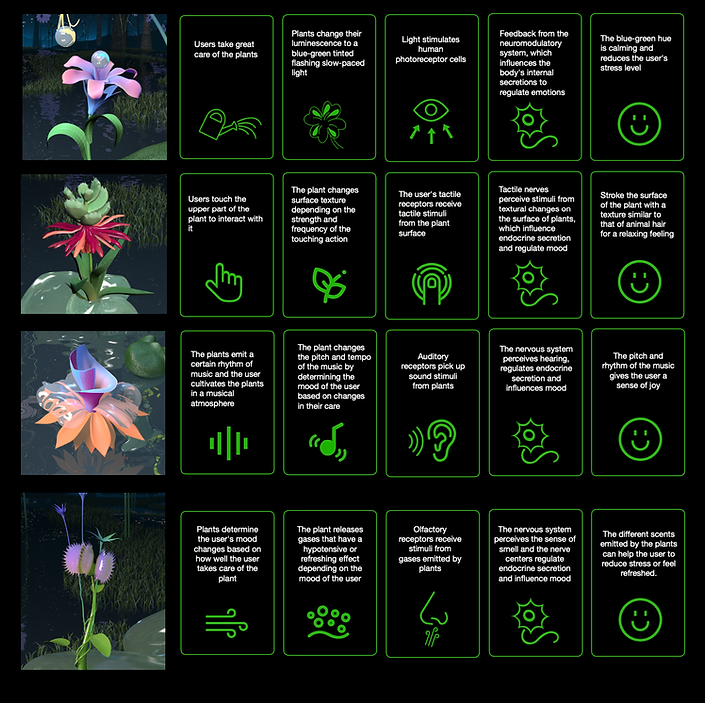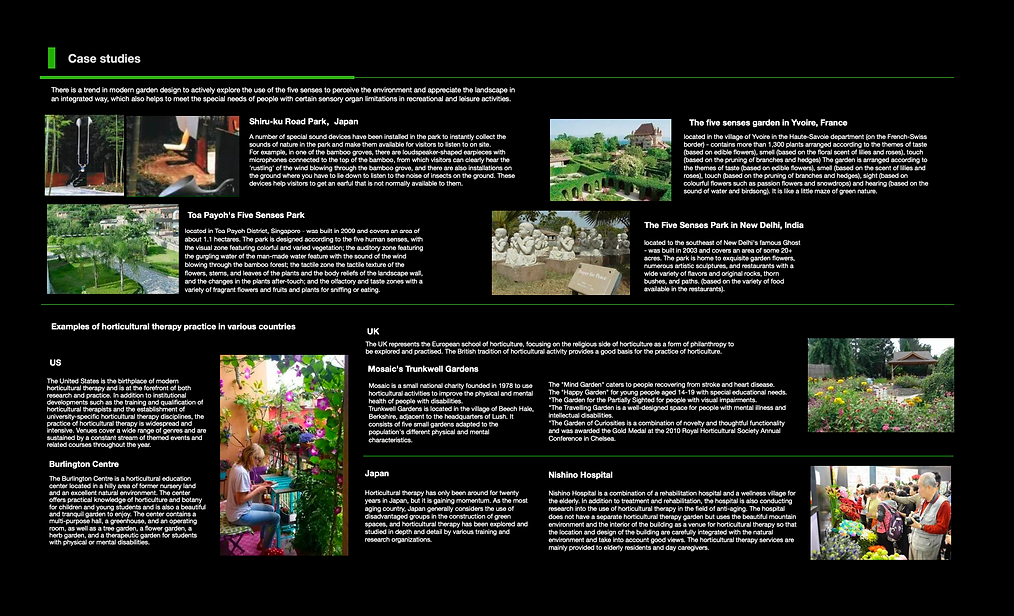Phytotherapy
to Project Briefing Video
background and goal
‘Phytotherapy’ is a horticultural therapy service design project focusing on the sub-health problems of modern people. Aiming at the psychological stress and depression risk of office workers due to long-term lack of outdoor activities and sleep deprivation, the project proposes to reinvent the horticultural therapy experience through five-sensory interactive plant installations. Based on the science of plant perception and interdisciplinary research, four types of future plant forms are designed to activate the senses of sight, sound, smell and touch, creating an immersive therapeutic scenario to help users prevent physical and mental illnesses and improve their quality of life.

Key solutions
1、Five Senses Plant System:
Visual plants: dynamic light and shadow installation simulates plant growth and guides meditation and relaxation (refer to the visual zone of the Five Senses Park in Singapore).
Auditory Plants: Integrated natural sound sensors (e.g. bamboo leaf wind, insect chirping) generate ambient white noise in real time (inspired by the acoustic installation in Toa Payoh Park).
Olfactory plants: release customised fragrances (e.g. lavender to help you sleep, ivy to purify the air), combined with air monitoring to regulate concentration.
Tactile plants: use responsive materials (e.g. memory metal blades) to alleviate anxiety through tactile feedback (an extension of the Japanese tactile garden concept).
2、Spatial integration programme:
Office scenarios: Desktop-level mini-devices monitor stress data in real time and link plants to release corresponding healing elements.
Public space: modular plant wall system (e.g. Ivar's five senses garden in France), combined with AR interaction to guide users to participate in depth.

design process
Evidence-based research:
Analyse global horticultural therapy cases (Burlington Centre, USA; Nishino Hospital, Japan) to refine the clinical value of five-sense stimulation for rehabilitation (e.g., 30% increase in speed of recovery after surgery).
Cite plant perception experiments (e.g., University of British Columbia study) to demonstrate the scientific basis of plant interaction.
Transforming user pain points:
Transform ‘sensory deprivation’ into a design opportunity to enhance healing through multi-sensory synergy (e.g., motorbike riding, partying, five-sensory scoring models).
Technology Integration:
Develop plant-environment feedback systems (e.g. adaptive scent concentration) to ensure personalisation of the experience.
Sustainable Design:
Adoption of biodegradable materials and low-energy sensors, echoing the core concept of eco-healing.



impact
Behavioural intervention: prototype testing showed that 87% of users experienced a 20% or greater reduction in daily stress levels (monitored by heart rate variability).
Industry innovation: Proposed the concept of ‘plants as new pets’, expanding the boundaries of horticultural therapy.
Social value: Provide non-pharmacological intervention solutions for high-pressure scenarios such as office and medical care, reducing the risk of depression.
